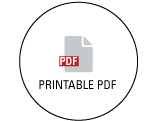Barbour EK, Mastori FA, Shaib HA, Yaghi RH, Tayeb IT, Sleiman FT, Kassaify ZG, Sawaya RK, Abdel Nour AM, Sabra AH, Harakeh S, Rath M
The International Journal of Applied Research in Veterinary Medicine 2009; 7(1): 43-49
Abstract:
The main objective of this study was to evaluate the efficacy of a nutrient mixture (NS) containing lysine, proline, green tea extract, ascorbic acid and other micronutrients in alleviating the pathologic effects in broilers challenged with a high or low dose of E. coli following a primary challenge with H9N2 avian influenza virus. Six groups of 19 broilers each were treated as follows.
Birds in groups 1-4 received a primary intratracheal challenge of 2 HA units of H9N2 virus at age 20 d. At age 23 d, birds from groups 1 and 3 received a high dose of E. Coli challenge in the right thoracic air sac (1 X 109 cfu/0.5ml/bird), while birds from groups 2 and 4 received a low dose of E. coli challenge in the same route (1.5 X 106 cfu/ml/bird). NS (976 mg/Kg body weight) was administered daily intraesophageally to birds in groups 3, 4, and 5 from age 17 d to 28 d. Group 6 birds were unchallenged and untreated. The average weight and feed conversion at 28 d of age was significantly improved (p<0.05) in the NS-treated groups compared to NM-deprived groups, with a similar low dose E. coli challenge. The frequency of ocular exudate and diarrhea at 2 d post E. coli challenge dropped significantly (p<0.05) in the NS-treated groups in comparison to NS-deprived birds, with a similar dose of E. coli challenge. The frequency of diarrhea was kept low at 5 d post-challenge, with the high dose of E. coli in birds treated with NS (p<0.05). The frequencies of right and left thoracic airsacculitis and the frequency of pancreatitis were reduced significantly in NS-treated birds with low-dose E. coli, in comparison to similarly challenged birds deprived of NS (p<0.05). However, in the highest dose E. coli challenge groups, the NS treatment lowered only the frequency of abdominal airsacculitis (p<0.05). In conclusion, treatment of broilers with nutrients to reduce injurious effects of H9N2/E.coli challenges is important since it targets improving the resistance in the host to this ailment and not the elimination of the infection with toxic chemotherapy.
Full Study:
